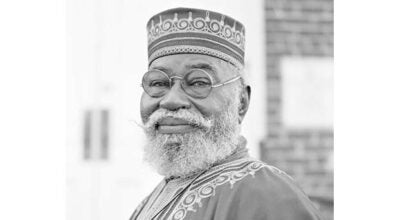Preliminary SOL Scores Reviewed
Published 5:01 pm Tuesday, June 26, 2012
PRINCE EDWARD – County school board members received a preliminary report on the spring SOL test performance.
It was a first look and not an exacting number for measuring achievement for the Federal Adequate Yearly Progress (AYP) and only a glimpse into state accreditation.
“…This is still a moving target,” noted the school system's Director of Accountability and Research Dr. Roy Echeverria. “That's why it's preliminary.”
Offered Division Superintendent Dr. David Smith, “I think one thing that we can say is there is some really bright spots in terms of improvement in specific classes and specific grade levels. And there are some areas that still need to have further attention. And…in every school it's like that every year and it's a continual work in progress, I think.”
Combining scores across grade levels for each of the schools, according to figures presented to the school board, 74.8 percent of elementary students passed their reading SOL tests; 56.1 percent math, 89 percent history and social studies, and 87.7 percent science.
At the middle school, 81.3 percent collectively passed reading, 64.8 percent math, 82.6 percent history and social studies; and 86.3 percent science.
At the high school, 87.5 percent passed reading, 66 percent math, 79.3 percent history and social studies, and 92.1 percent science.
“Remember,” Dr. Echeverria cited, “math is a new standard in all schools, all grade levels. Also, history, social science was the new standard last year.”
He offered that there was a “nice recovery” in history/social science compared to last year offering that the scores this year were “significantly better.”
Dr. Echeverria presented a further breakdown in scores by grade level.
At the elementary school, the percentage of third graders passing reading was higher than fourth graders-81.8 percent compared to 69.4 percent. Third grade math scores were also higher, too-62.3 percent for third graders compared to 57.5 percent.
Middle school reading scores came in with a 75.4 percent pass rate at the fifth grade, 77.7 at the sixth grade, 87 percent at the seventh grade and 86 percent at the eighth grade levels.
Similarly, math scores were broken down by the various math offerings by grade level.
“One thing that I want to highlight is that math standards-the new standards-we assessed them this year so you see lower scores in math, but if you notice in middle school, something remarkable happened. In geometry, this is new standards for all math, but in geometry, we achieved (a) hundred percent pass rate. New standards.”
In Algebra I, there was also an 86 percent pass rate.
The pass rate for fifth grade math was 60.3 percent; 66.9 percent for sixth grade math, and 46.2 percent for eighth grade math. (Only one student took seventh grade math and that student passed the SOL.)
Also at the middle school, 83.1 percent passed civics and economics SOLs, 82 percent US history I, 78.3 percent US history II, and 86.2 percent Virginia studies. In science, 80.2 percent passed fifth grade science and 93.1 percent passed eighth grade science.
Among the notable scores at the high school, 89 percent passed end-of-course reading tests, 79.8 percent of students passed Algebra II, 46.3 percent geometry; 76.8 percent passed Virginia and U.S. history, 77.1 percent passed world history I; 86 percent passed world history II, 91.7 percent passed biology; 98 percent passed chemistry; and 89.2 percent passed earth science.
Dr. Echeverria noted that English and math are part of AYP while all subject areas are part of accreditation.
Unless the federal government approves a waiver (which Virginia has sought), AYP threshold is 91 percent of English and 90 for math. Should it be approved, it would freeze the percentage at 86 for reading and 85 for math and give the schools additional time to meet the requirements. Dr. Echeverria also noted that there are other ways to make AYP, citing the reduction in the failure rate.
“…I don't want to compare these numbers to AYP because, remember, we don't have the summer, we don't have the fall combined with the spring. This is just the spring.” Dr. Echeverria highlighted.
Subgroup data, Dr. Smith cited, is going to be the critical factor in making the distinction on whether they are any closer to accreditation or not. “And I know that with what has been developed so far with the waiver requests, that the subgroup definitions are critical and they are gonna be, in some cases, a little harder to achieve than they are now.”
He also cited the calculation of graduation rate-factored in for the first time in the current year for state accreditation-are “critical numbers, as well, that factor into whether a school's accredited or not.”
While the school division had some additional time to implement online testing at the elementary school level, Prince Edward has implemented it for all grades and all subject matter this year, with the exception of students with disabilities that the accommodation required administration of the test using paper and pencil.
Collectively, 98.2 percent of the school division's tests were administered online.
Cambridge Education consultant Dr. Harold Lawson also presented an update on high school progress and a look into SOL student performance in some “very preliminary numbers” as well.
“We're working on school climate,” Dr. Lawson offered, “and I think you can see a difference.”
He would also note, “Are we where we want to be? No. But we are putting things in place to get where we want to be.”
Dr. Lawson, citing the preliminary figures, noted that they are “basically in the same area that we were last year from a statistical standpoint” in the area of reading (at 87.5 percent passing). History, however, has shown improvement. Again, looking at the preliminary numbers, the high school is standing at a 78 percent passing rate compared to 69 percent the previous year.
They've also made “great progress” in science, Dr. Lawson highlighted, at 92.1 percent (student registered 86 percent the previous year).
Math, a new test implemented for the current school year where many schools across the state have struggled, fell from 88 to 66 percent.
“…I know that we're doing a lot of things now…to ensure that math scores will be higher next year,” Dr. Lawson offered.
He also, however, cited growth in the preliminary figures for subgroup performance and a narrowing of the achievement gap.
Dr. Lawson noted that they're trying to close the gap by 50 percent each year, which happened in science. Seventy-seven percent of black students passed science SOLs compared to 96 percent of white students in 2010-11. This year (again, weighing the preliminary figures) 88.4 percent of black students passed, compared to 93.7 percent of white students.
The achievement gap, even in the tested area where students struggled-math-has narrowed. Though the percentage of black students passing fell from 82 to 64 percent, the percentage of white students also fell from 96 to 65 percent.
“We have some very, very defined goals ahead of us,” Dr. Lawson told the school board. “We know what we have to do, but it took some time to put things in place and I want to thank Dr. Smith personally because he has helped us put those things in place.





